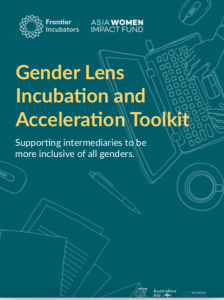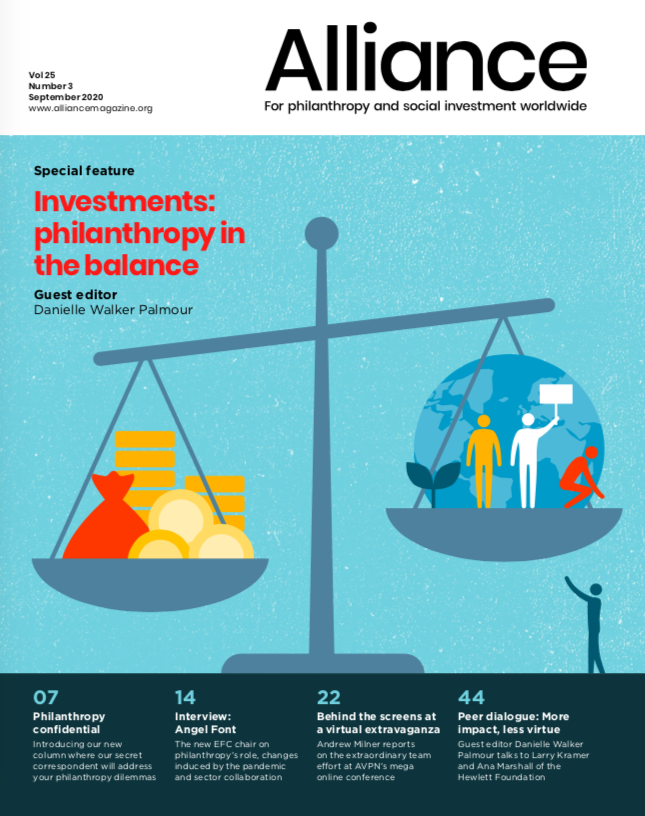Gender lens investing – the deployment of all forms of capital from philanthropic to public – to further the cause of women’s empowerment and the pursuit of their rights is not just good for women, it may turn out to be good for all of us
The recent Asian Venture Philanthropy Network (AVPN) online conference turned the spotlight on gender lens investing (GLI), a practice becoming increasingly prominent. And it needs to. Women’s rights and their participation in society and the economy still lag behind, especially in developing countries. Moreover, the Covid-19 pandemic threatens not only to slow their progress, it may even send them into decline. That being the case, the need for increased adoption of GLI has never been more urgent.
The case for
The virtues of supporting women’s empowerment have long been attested, not only as a matter of principle but of practice. A recent McKinsey report noted that if every country were to emulate the fastest improving countries in terms of gender equality in their region, $12 trillion (around 11 per cent) would be added in annual GDP by 2025. Moreover, the report estimates that if women played an identical role to men in the labour market, global GDP would grow by 26.5 per cent.

Disability enterprise development agency features as a case study in the Gender Lens Incubation and Acceleration Toolkit.
And it’s not just the direct economic contribution that women make. Evidence indicates that there are also indirect benefits in terms of health, welfare, education, and even environment. According to a World Bank report as long ago as 2012, increasing the share of household income controlled by women changes spending in ways that benefit children, including access to and longer engagement in education, while the Brookings Institute argues that educating girls is one of the most effective ways to mitigate climate change and that increased family planning would also help reduce CO2 emissions by the simple expedient of having fewer people creating them. Whichever development goal you think of, it’s likely that investing in women will contribute to meeting it.
Gaining momentum
Gender lens investing is a growing area. At the end of 2018, wealth managers, Tribe, noted figures from US SIF showing ‘gender lens criteria applied to $868 billion in US money manager assets’, more than double the figure ($397 billion) for 2016. The same item notes 87 private gender-lens funds identified by Wharton and Project Sage 2.0, an increase of almost 30 from the previous year. Participants at the AVPN conference were similarly upbeat about the prospects. Ayaka Matsuno of the Sasakawa Peace Fund (SPF) in Japan, which established the Asia Women Impact Fund out of its endowment in 2017, noted that, at the time funds for investing in women’s empowerment were almost non-existent in the region. In the three years since, the sector has grown rapidly, though most of that has been in Japan. A further token of growing interest is the Gender Lens Incubation and Acceleration Toolkit, launched jointly by SPF and the Australian Department of Foreign Affairs and Trade’s Frontiers Incubators programme earlier this year.

Ayaka Matsuno hosts a session on GLI at Impact Investing Forum 2019.
GLI is also much more diverse, says Suzanne Biegel of Catalyst at Large. Investment in women used to be mainly directed at women-led businesses or issues with an obvious gender element (education of women and girls, for example). Now, GLI extends across the range, which suggests a more acute perception of the symbiotic relationship between increased attention on women’s welfare and the success of development. Apart from investing in enterprises owned or led by women, the Centre for Gender Lens Investing in Asia cites the following as examples of GLI: investing in enterprises that promote workplace equality and offer good employment opportunities for women and mothers; investing in enterprises that provide goods and services that benefit women and girls and; investing in enterprises that help combat social issues that disproportionately affect women and girls.
The Covid effect
Many sources tend to stress the possibilities gender lens investing offers, particularly in Asia. The Center for Gender Lens Investing in Asia, for example, speaks of ‘unprecedented opportunities’, describing the continent as ‘undoubtedly an attractive place for investment: home to 60 per cent of the world’s population, one-third of the global economy, two-thirds of global economic growth’. Well and good, but even GLI’s most ardent supporters would admit there’s still a long way to go.
Moreover, the need for a specific focus on women’s empowerment has been given added stimulus by the Covid-19 crisis. From a negative standpoint, the pandemic threatens to turn back the development clock and women, as usual, will be at the front end of any shocks in store. There are worries that it will affect areas like education (girls’ education is an early casualty of economic hardship) and nutrition (as one speaker on Gender Day of the AVPN conference noted, ‘women eat last and least’) while lockdown has seen an upturn in violence against women. What’s more, the economic effects of the virus are likely to hit women’s SMEs – a mainstay of many economies in the developing world – especially hard. An article on Australian Aid’s Investing in Women website says that an assessment of 27 women’s SMEs across three South East Asian countries undertaken in March shows that the majority expect a significant fall in revenues and profit margins as a direct consequence of Covid-19 disruptions in the short and medium term.
And this is at a time when funds for development are likely to take a downturn. Many AVPN conference attendees spoke of what one called a ‘crisis of liquidity’. Investing in Women points out that while governments and development finance institutions are putting together fiscal and economic stimulus packages to help business cope with Covid, ‘women’s SMEs may not automatically benefit from such interventions for several reasons’. First, because the principal target for such packages tends to be ‘asset heavy industries’ of which women’s SMEs are a low proportion. Second, those measures take time and cash-strapped SMEs need help immediately. Third, measures tend to favour traditional borrowers which simply reinforces existing gender biases ‘in a financial industry where women entrepreneurs remain grossly underserved.’
The pandemic provides a sort of ‘ground zero’ from which… donors and investors can start afresh with a gender lens built in.
This touches on another point. One reason women entrepreneurs are underserved is that very few investment professionals in developing countries are women. According to Hyunjoo Je of impact venture capital fund, Yellowdog Corp, in Korea, she and her colleagues are part of a small minority – only 7 per cent of investment professionals in Korea are women. Interestingly, Yellowdog didn’t start out as a gender lens investor, women entrepreneurs reached out to them.
 There are other barriers, too, one of which is likely to be ignorance. According to an audience poll at the AVPN conference session on GLI, half of those attending weren’t aware of the opportunities for gender lens investing. In addition, women entrepreneurs, as do women generally, still suffer from gender bias.
There are other barriers, too, one of which is likely to be ignorance. According to an audience poll at the AVPN conference session on GLI, half of those attending weren’t aware of the opportunities for gender lens investing. In addition, women entrepreneurs, as do women generally, still suffer from gender bias.
That’s the bad news. On the positive side, participants at the AVPN conference were keen to stress that the pandemic provides a sort of ‘ground zero’ from which to rebuild not only a more just base but also one which offers a better chance of a sustainable future – principle meeting practice again. Donors and investors can start afresh with a gender lens built in. They can support the recreation of health, welfare and economic systems in a way that takes full account of the rights and needs of women – and we all benefit.
Forwards or backwards?
In short, women’s empowerment is at a crucial point. If it is not intentionally pursued, there is a strong possibility that not only will development stall, it may even go into reverse. GLI may hold the key. Its widespread adoption might accelerate progress towards a number of desirable development goals. There is a particular reason for philanthropists and social investors to sit up and take notice. Given the likely reduction of foreign investments and international development financing in what Investing in Women calls ‘the post-Covid-19 environment’, the growth of gender lens investing ‘will thus rely on mobilising innovative and flexible local capital, including sources such as high net worth individuals (including women), family offices and foundations’.
Andrew Milner is associate editor of Alliance magazine
Email: andrew@alliancemagazine.org





Comments (0)